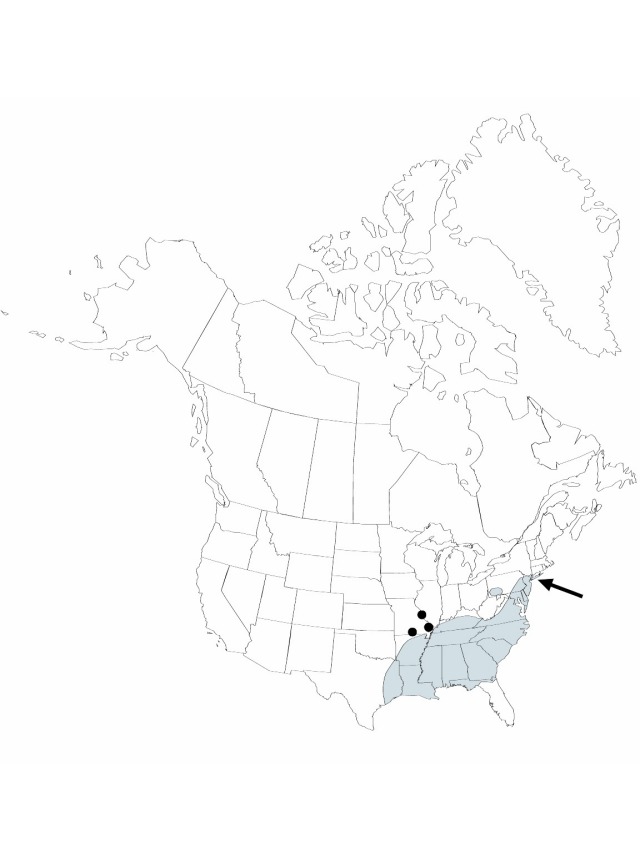Juncus debilis
Manual 481506. 1848.
Herbs, perennial, cespitose, 1–2.5 dm. Culms erect, terete, 1–2 mm diam., smooth. Cataphylls 0–1, maroon or dark green, apex acute. Leaves: basal 0–1, cauline 1–3; auricles 1–1.5 mm, apex rounded, scarious; blade maroon or dark green, terete, 1–12.5 cm × 0.5–1.5 mm. Inflorescences terminal panicles of 3–50 heads, 2–8 cm, branches ascending to spreading; primary bract erect; heads 2–10-flowered, obpyramidal, 2–5 mm diam. Flowers: tepals green to straw-colored, lanceolate, 1.8–2.3 (–2.5) mm, apex sharply acuminate; stamens 3, 1/2 filament length. Capsules exserted, straw-colored, 1-locular, narrowly ellipsoid to lanceoloid, 2.8–3.7 7 (–4.2) mm, apex acute, valves separating at dehiscence. Seeds ellipsoid, 0.3–0.4 mm, not tailed; body clear yellowbrown.
Phenology: Fruiting summer.
Habitat: Marshy shores, in small streams, swamps, wet clearings, spring runs, commonly in very soft mucky substrates
Elevation: 0–700 m
Distribution

Ala., Ark., Del., Fla., Ga., Ill., Ky., La., Md., Miss., Mo., N.J., N.Y., N.C., Pa., S.C., Tenn., Tex., Va., Mexicos (Chiapas), Central America (Honduras)
Discussion
Juncus debilis A. Gray is a name being proposed for conservation.
Selected References
None.
Lower Taxa
"-7mm" is not declared as a valid unit of measurement for this property."-7mm" is not declared as a valid unit of measurement for this property.